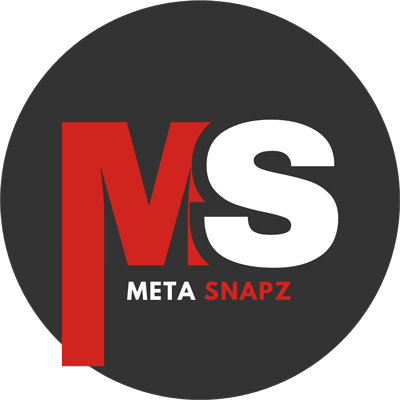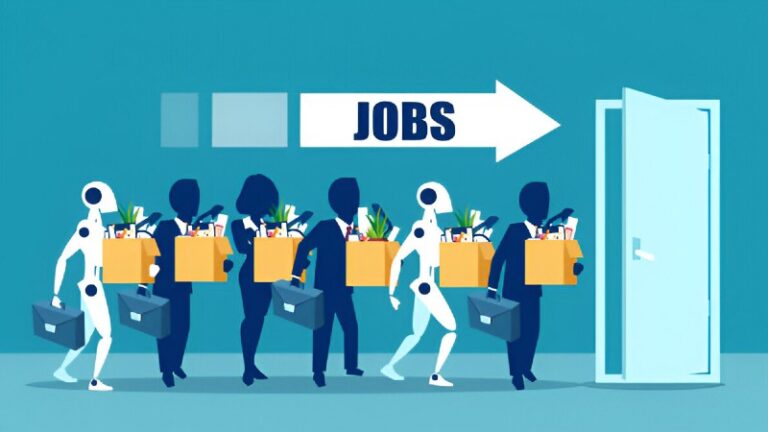Artificial Intelligence (AI) is no longer a distant concept it’s here, transforming industries, reshaping workflows, and sparking a global debate: will AI replace our jobs? Some predict mass automation and unemployment, while others argue AI will unlock new opportunities. The truth is more nuanced. The future of work isn’t about humans versus machines it’s about how societies adapt, how workers reskill, and how businesses integrate technology responsibly.
AI and Jobs
Headlines often warn of an impending jobs apocalypse, but global labor research suggests otherwise. The International Labour Organization (ILO) estimates that only 2.3% of jobs worldwide can be fully automated by generative AI. That’s a far cry from total displacement. The real story is about task automation—specific duties within jobs being replaced—rather than entire occupations disappearing overnight.
For example:
- Customer service agents are seeing repetitive tasks handled by chatbots, but complex problem-solving and empathy remain human strengths.
- Clerical roles (data entry, scheduling, payroll) face high exposure, but many will evolve into AI management and oversight roles.
- Creative professionals now use AI as a tool to draft, design, or brainstorm—but original storytelling and cultural nuance remain in human hands.
So, while millions of roles will be disrupted, millions more will be reshaped or created. The critical question is: how quickly can workers and organizations adapt?
Which Jobs Are Most at Risk?
AI’s impact varies by sector. Some roles face high automation risk, while others remain relatively safe due to creativity, empathy, or physical dexterity requirements.
| High-Risk Roles | Resilient Roles |
|---|---|
| Clerical & administrative support | Healthcare providers (nurses, therapists, doctors) |
| Customer service representatives | Creative professionals (writers, designers, filmmakers) |
| Warehouse & manufacturing workers | Educators (especially early childhood & special education) |
| Bookkeeping & data entry | Skilled trades (electricians, plumbers, HVAC technicians) |
| Transportation & delivery drivers | HR and organizational leaders |
The Hidden Labor Behind AI
One aspect rarely discussed in the AI takes jobs debate is the hidden human workforce powering AI systems. Behind every chatbot or automated system are millions of people labeling data, moderating content, and verifying machine learning outputs. Often, this labor is precarious and underpaid, particularly in developing countries.
What looks like seamless automation is, in fact, a hybrid of human and machine work. Recognizing this ghost workforce shifts the conversation: AI doesn’t eliminate human labor—it redistributes it, often invisibly. This raises questions about job quality, global inequality, and ethical AI supply chains.
Regional and Gender Inequalities
AI’s impact isn’t uniform—it reflects existing inequalities:
- Gender divide: Clerical roles, heavily staffed by women, face the greatest automation risk. In high-income countries, 7.8% of women’s jobs are at risk vs. 2.9% of men’s (ILO).
- Global divide: Many developing countries lack the digital infrastructure to benefit from AI-driven productivity gains. In Latin America, nearly half of jobs that could be augmented by AI don’t even use computers at work.
Without intentional policies, AI could widen—not close—global and gender gaps in the labor market.
The Rise of New Careers
AI doesn’t just displace—it creates. Entirely new job categories are emerging, many of which barely existed a decade ago. Examples include:
- AI Ethicists: Ensuring algorithms are fair, transparent, and unbiased.
- Prompt Engineers: Specialists who craft the language humans use to guide AI tools.
- Human-AI Interaction Designers: Building seamless collaboration between humans and intelligent systems.
- Digital Well-being Coaches: Helping individuals and organizations manage tech overload and prevent burnout.
Much like web developers and social media managers rose in the last two decades, AI-related jobs will become mainstream in the 2030s and beyond.
How Workers Can Future-Proof Their Careers
In an AI-driven economy, certain skills become essential for resilience:
- Adaptability: The ability to continuously reskill as technologies change.
- Creativity: Original thinking that machines cannot replicate.
- Emotional intelligence: Human connection, negotiation, and empathy.
- Tech literacy: Understanding how to use, manage, and even supervise AI tools.
Major corporations are already investing in reskilling. AT&T committed $1 billion to retrain 100,000 workers, while Amazon pledged $700 million to upskill 100,000 employees. IBM’s New Collar initiative focuses on hiring based on skills rather than degrees, reflecting the shift toward continuous learning.
The Role of Policy and Social Dialogue
Perhaps the most overlooked factor in the AI and jobs debate is governance. The ILO emphasizes that social dialogue—collaboration between workers, employers, and governments—is critical for managing AI transitions. Countries like Germany and the Nordics, where unions and employers cooperate closely, show smoother adoption and higher worker acceptance.
Key Policy Priorities
- International cooperation: Bridging the AI divide with knowledge-sharing and equitable access.
- National capacity building: Investment in education, digital infrastructure, and human-centered AI policies.
- Workplace integration: Involving employees in tech adoption to boost productivity and preserve job quality.
Key Takeaways
- Only 2.3% of global jobs are at risk of full automation, but task-based disruption is widespread.
- Clerical roles, especially those dominated by women, face the highest exposure.
- AI will create new jobs—such as ethicists, prompt engineers, and AI designers—that we are only beginning to imagine.
- Policies, corporate investments, and lifelong learning will determine whether AI enhances or undermines job quality.
Conclusion
The future of work isn’t a simple story of machines replacing humans. Instead, it’s a story of transformation:
- Some jobs will disappear, especially in routine and clerical fields.
- Many will evolve, with humans working with AI rather than being replaced by it.
- New roles will emerge, reshaping industries in ways we can’t fully predict.
Ultimately, the outcome depends on choices we make today—about policy, corporate responsibility, skills development, and ethical AI governance. AI will not take your job by default. But if society fails to prepare, the risks of inequality and exclusion will grow.
Frequently Asked Questions (FAQs)
Will AI replace all human jobs?
No. Studies show that only about 2.3% of global jobs could be fully automated. Most roles will be transformed rather than completely replaced, with humans working alongside AI tools.
Which jobs are most at risk from AI automation?
Roles involving repetitive, structured tasks are most exposed, including clerical work, customer service, basic bookkeeping, warehouse work, and some manufacturing and retail positions.
Which jobs are least likely to be replaced by AI?
Jobs requiring empathy, creativity, critical thinking, or hands-on skills are safer. Examples include healthcare providers, teachers, creative professionals, skilled tradespeople, and HR leaders.
How can workers future-proof their careers?
Workers should develop adaptability, emotional intelligence, creativity, and tech literacy. Lifelong learning, reskilling, and embracing AI as a collaborative tool are crucial strategies.
Will AI affect men and women differently?
Yes. Women are more exposed to AI disruption due to higher representation in clerical and administrative roles. Globally, 3.7% of women’s jobs could be automated compared with 1.4% of men’s jobs.
How can governments and companies ensure a smooth AI transition?
Through social dialogue, reskilling programs, equitable access to AI, and ethical governance. Countries and companies that involve workers in AI integration see smoother adoption and higher productivity.


